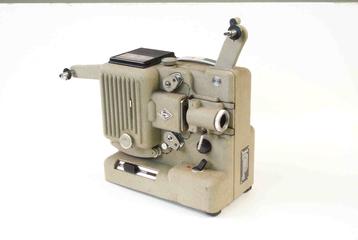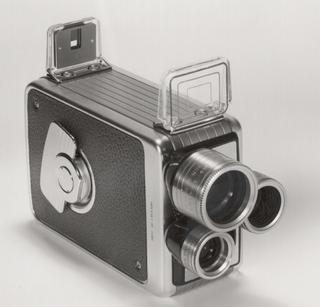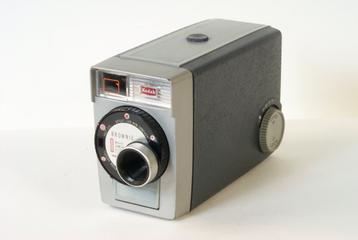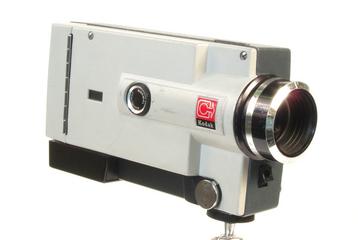
Le Praxinoscope



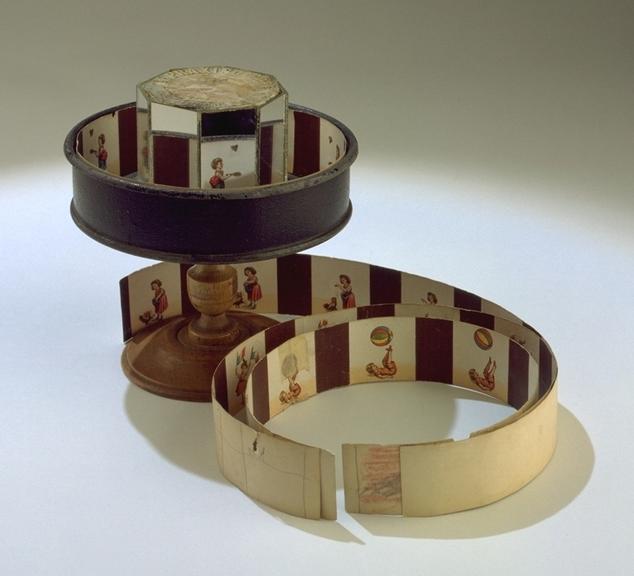
Le Praxinoscope, made by Emil Reynaud, Paris. 12.5cm diameter drum; two facet mirror drum. French patent 120484, 30 August 1877 'Appareil pour obtenir l'illusion du mouvement a l'aide de glaces mobiles'. Six complete bands, plus fragments.
This optical toy, a variation on the Zoetrope, was invented by the artist Emile Reynaud. A paper band showing successive images of movement is placed around the circumference of the drum. At the centre is a series of mirrors, each reflecting a single image. The drum is rotated and the viewer looks at the mirrors, which reflect each successive drawing, giving the illusion of movement.
This is possibly the earliest example of showing a moving picture without the need for intermittent motion and shutter mechanisms. Know as 'optical stabilisation', this mirror drum technique was later applied to early television and, using prism blocks, to high speed cine cameras.
Details
- Category:
- Cinematography
- Collection:
- Kodak Collection
- Object Number:
- 1990-5036/4952
- Materials:
- mahogany (wood), wood (unidentified), metal (unknown), paper (fibre product) and mirror-glass (silvered)
- Measurements:
-
overall: 130 mm 125 mm,
drum: 125 mm,
- type:
- optical toy and praxinoscope
- credit:
- The Kodak Collection at the National Media Museum, Bradford
